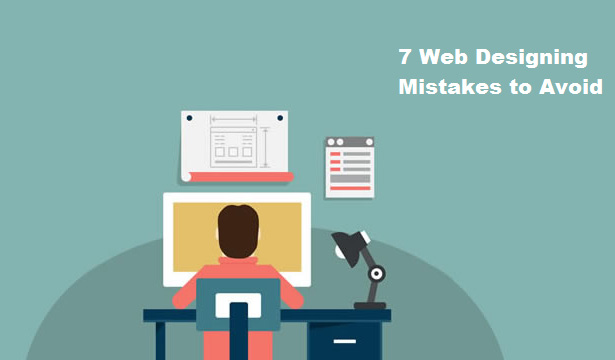Blog
Top 7 Common Web Design Mistakes
- April 20, 2017
- Posted by: lisaadelhi
- Category: Graphic & Web Design Blog

Web design has undergone a massive overhaul from responsive websites for mobile viewing and other cool design options, the possibilities now are endless. This overhaul has also increased the need for quality in web designing. Capturing and retaining the attention of the target audience by creating top notch websites is now the norm.
However, there are mistakes that web designers commit frequently, which is reflected on the final product. We will talk about these mistakes and how to avoid them
1.Non-Scannable text
From a users perspective, any webpage with just a wall of text is a zone that one would not like to tread through. It does not speak of an interactive experience and makes the user labor in order to understand the information.
What’s Recommended
Try using bullet points, subheads and highlighting the important words. Write in a simple language and use short paragraphs.
2. Opening Link in a New Browser
This is one aspect that users are always complaining about. Opening new windows automatically for the users is not a good idea. The new pop-up does not allow a user to go back to the previous page and can dilute the main information.
What’s Recommended
Let the user decide if they want to open up a new window.
3.Refraining from Answering Users Queries
Not providing relevant information to the user can backfire badly as a users visit to a website begins with the need for specific information. Take a B2B site, for example, say the site does not display the price for its products. The relevance of displaying the price of a product in a B2B website is immense. Thus not displaying the price can irritate the user and result in the website losing a possible customer.
What’s Recommended
Put out the specifics without camouflaging it with fluff. Even if you do add fluff, make sure the specifics are highlighted.
4.Poor use of HEADERS, SIDEBARS and FOOTERS
Normally users associates heading areas or sidebars and footers as advertising space. So they don’t even bother to go through them carefully. Also too much of these features make your website look cluttered and creates a distracting experience for the visitor.
What’s Recommended –
Avoid designing your site like an advertising haven. Get the balance right between the content in the page and the headers, footers & sidebars.
5.Constant Font Size
Users have different preferences when it comes to font sizes while reading so they tend to prefer sites where they can resize the text according to their convenience.
What’s Recommended
Avoid using CSS style sheets that does not allow web browsers to modify the font size. It is also recommended to keep font sizes in relative terms rather than indicating it by a fixed number of pixels.
6.PDF Files for Online Reading
Using PDF files on webpages restricts the users ability to navigate seamlessly and find relevant information. Standard browser commands do not work as intended making tasks like saving or printing a file extremely cumbersome. Also, these pages usually do not fit the browser’s window correctly.
What’s Recommended
Avoid using PDF files for webpages, instead use a standard webpage.
7.Failing to use Responsive Design
The number of users viewing webpages on their cell phones and tablets are going up significantly. As a web designer it is no longer feasible to keep the layout of a website limited only to only computers. From scoring a higher rank on various search engines to reaching out to more users, the pros are worth the effort.
What’s Recommended
Opt for a responsive design for your website so it is well supported across multiple devices such as mobile, tablets etc.

